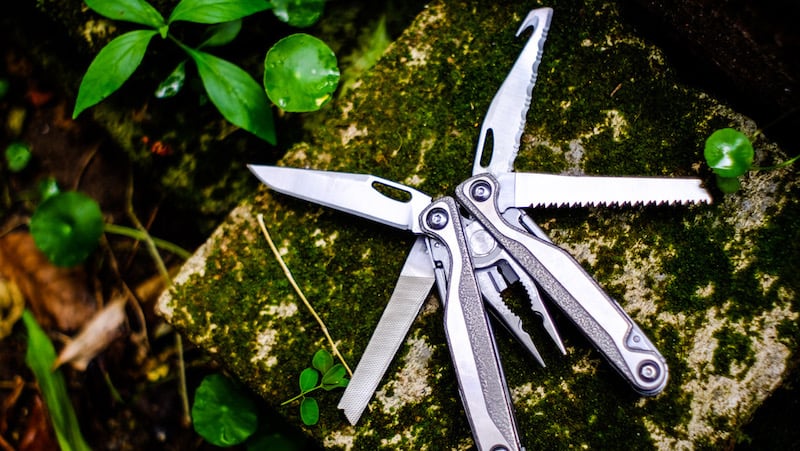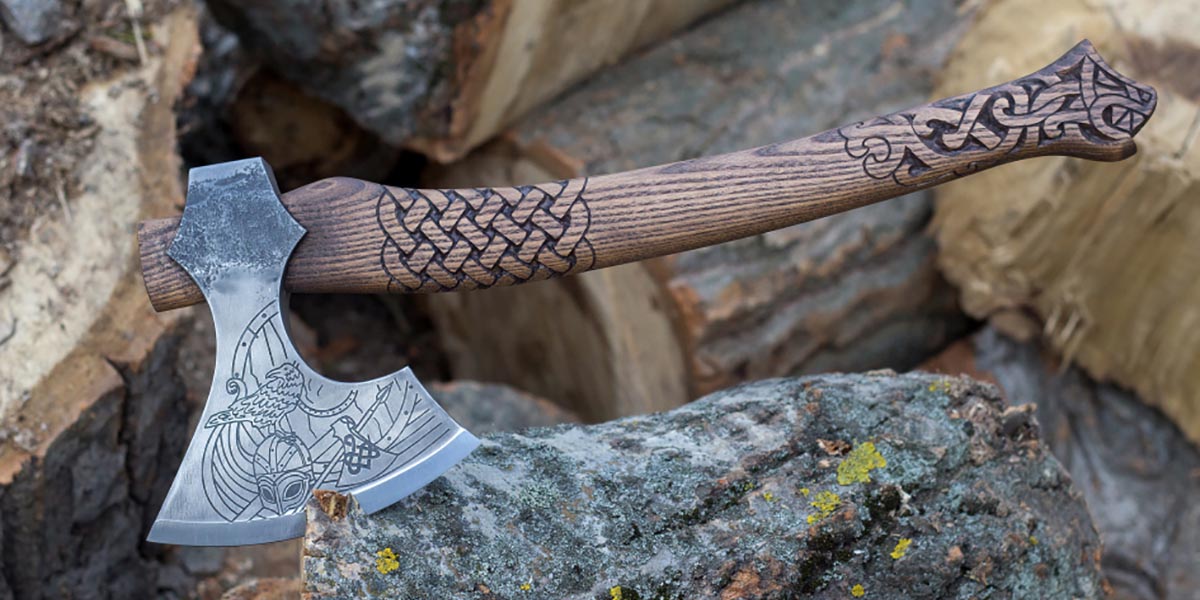The axe is one of humanity’s oldest companions — a simple idea that shaped our survival long before written history ever showed up. Early people crafted rough hand-axes from chipped stone and strips of rawhide more than a million and a half years ago, and those early creations served every purpose imaginable: digging out stubborn roots, cutting firewood, preparing animals for food, and, during darker moments, fighting off enemies and wild creatures. As time rolled forward into the Bronze Age, metalworkers began shaping double-bitted axes specifically for war, making them sharper, stronger, and far more dangerous. Then, many centuries later in 19th-century Pennsylvania, European settlers popularized the same double-bit style as a practical tool for felling trees and carving out farmland in the new world.
As with every tool humans rely on, the key to choosing the right axe always comes down to purpose. Each variety exists for a reason — weight, balance, head shape, and handle length all shift depending on the intended task. Using an axe improperly is more than just frustrating; it can be unsafe. But when the tool fits the job correctly, the work feels smoother, cleaner, and surprisingly efficient. Axes today come in countless shapes and sizes, and each one reflects a different job, from survival tasks in the wilderness to precise woodworking or swinging in the heat of battle many centuries ago.
What Is an Axe?
I’ve always appreciated the way simple definitions somehow leave an ocean of room for interpretation. The Collins English Dictionary sums up an axe as “a tool used for cutting wood. It consists of a heavy metal blade which is sharp at one edge and attached by its other edge to the end of a long handle.”
Accurate, of course — but it barely scratches the surface. A single sentence can’t capture how many completely different forms an axe can take, or how specialized some designs have become. For that reason, it makes sense to break axes into specific groups. After all, using a tomahawk to chop through dense firewood would be like trying to open a can with a pocketknife: possible, maybe, but definitely not ideal.
Axes for Survival
Tactical Axe
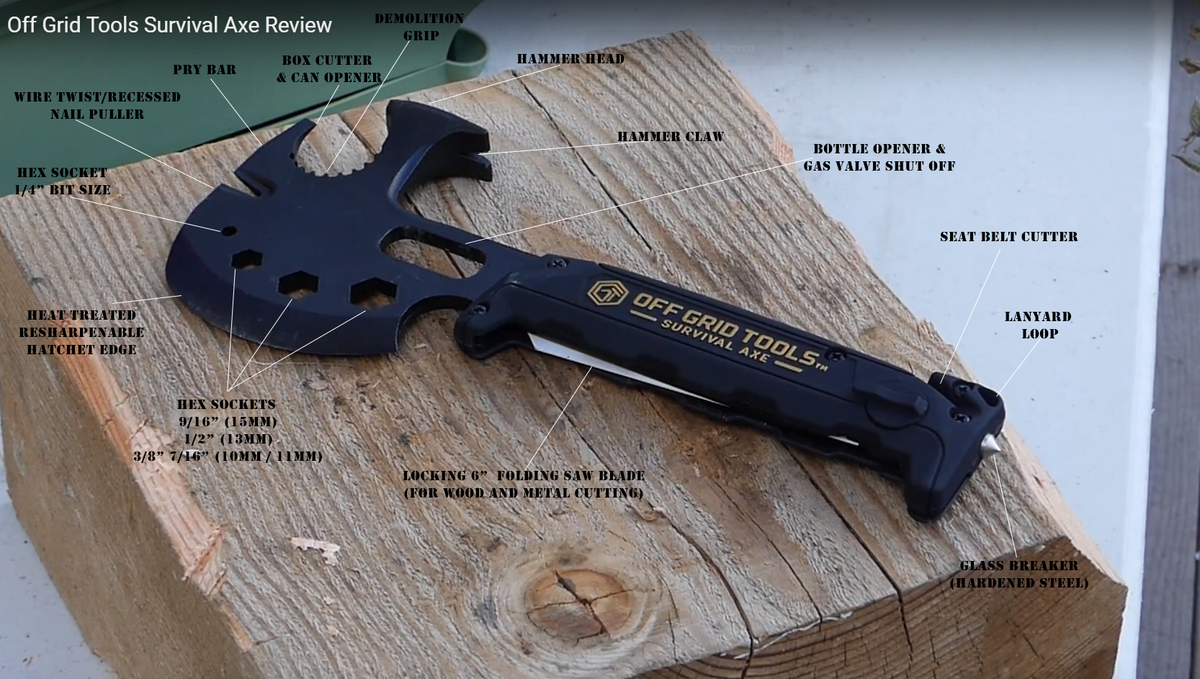
A tactical axe represents a modern blend of versatility and rugged design — something built to do almost everything reasonably well without being tied to one single task. At its core it’s a chopping tool, but manufacturers often build in extra features like pry edges, hammer surfaces, cutting hooks, or even shovel-like extensions. Some versions feel streamlined and aerodynamic, similar to a lightweight tomahawk, while others are thicker, sturdier, and intended for harder fieldwork such as clearing debris or cutting through stubborn roots.
Most tactical axes use a full-tang construction for strength, with high-quality steel that holds up under repeated abuse. Campers, preppers, and survival enthusiasts often keep one nearby because it fills the role of several tools at once — something especially useful when you’re far away from a toolbox.
Hudson Bay Axe
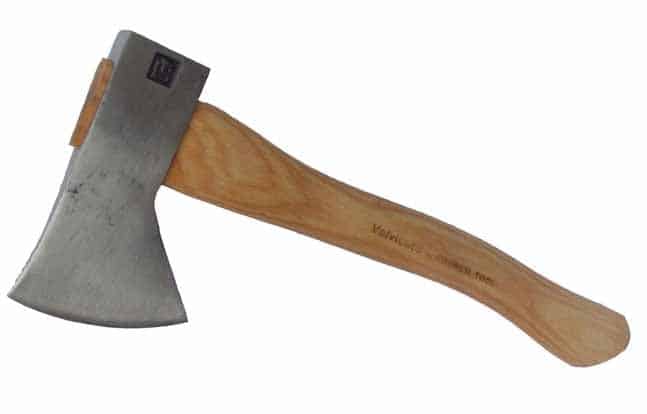
This classic axe traces its history back to French trappers working across the forests of North America. Compact enough to wield with one hand yet strong enough to make a real difference in camp, the Hudson Bay axe sits somewhere between a hatchet and a full-sized felling axe. Its balanced weight makes it useful for light chopping, splitting smaller logs, and general wilderness tasks. People who spend a lot of time outdoors often favor it because it handles daily chores without requiring the strength or endurance that larger axes demand.
Forest Axe
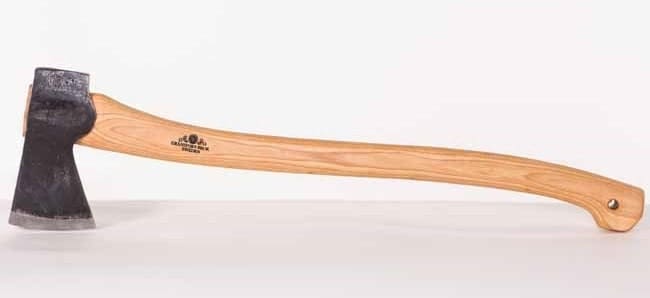
The forest axe is built for serious, extended work deep in wooded terrain. The design leans toward durability and raw cutting efficiency — long handle, heavy head, reliable balance. Although it can perform a wide range of tasks, users often rely on it for jobs that require repeated heavy swings, such as clearing thick brush, cutting through dense trunks, or preparing firewood for long stays in remote areas.
Its ruggedness is part of its charm. When you’re carrying only a handful of tools far from civilization, you want at least one that refuses to fail, and the forest axe fills that role well.
Axe Head Mattock
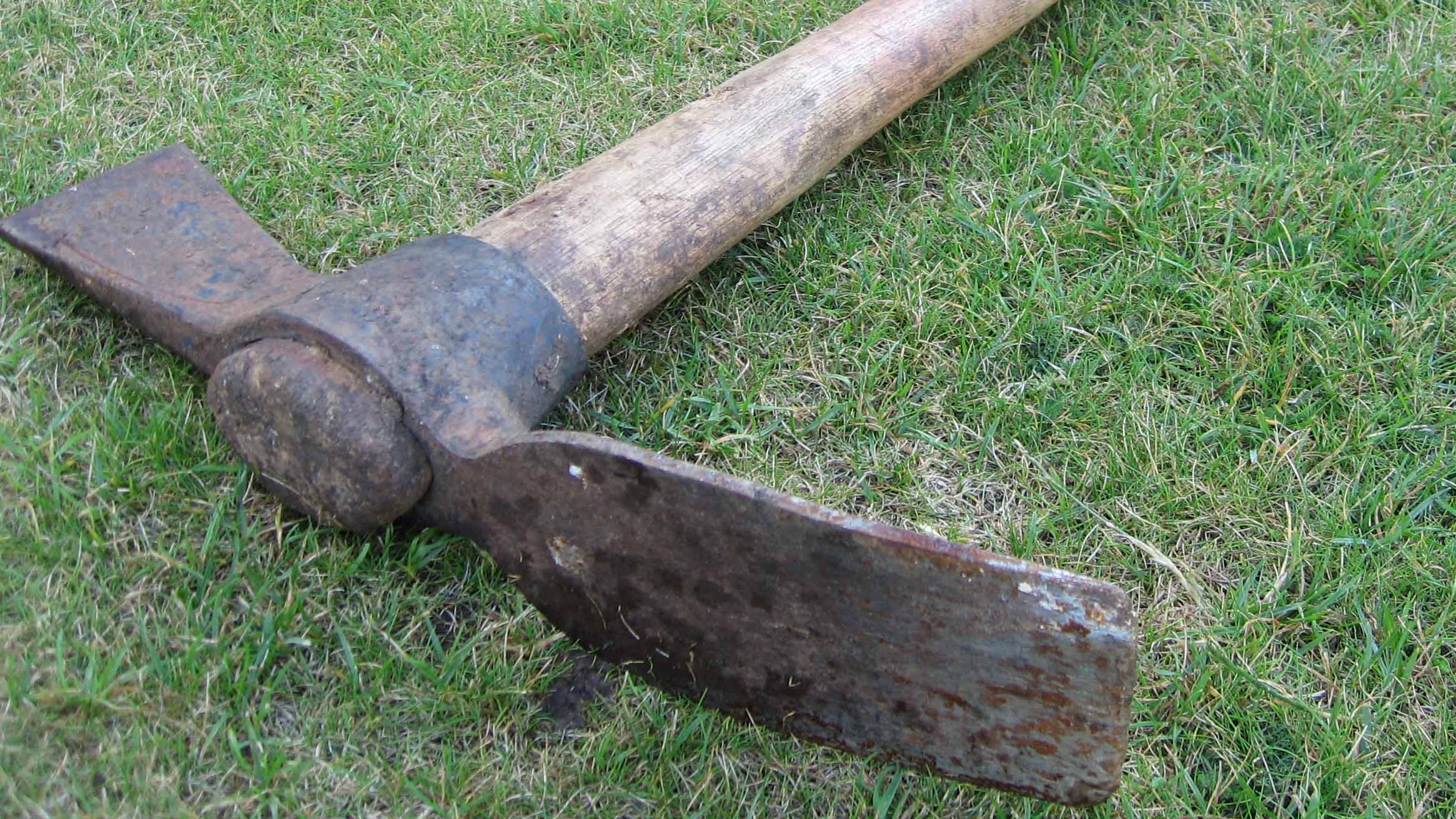
Although many trades use the axe-head mattock, it earns a place among survival tools because of how practical it becomes in challenging outdoor conditions. The mattock typically combines an axe blade on one side with a pick or adze on the other, allowing it to chop, dig, pry, and break through layers of stubborn earth.
Where it shines most is in root chopping. Anyone who has tried to dig a small trench or clear a campsite in wild, tangled soil knows how frustrating tough roots can be. The mattock cuts through them far more easily than a shovel ever could, making it invaluable during emergency tasks or long-term off-grid projects.
Work Type Axes
Splitting Maul
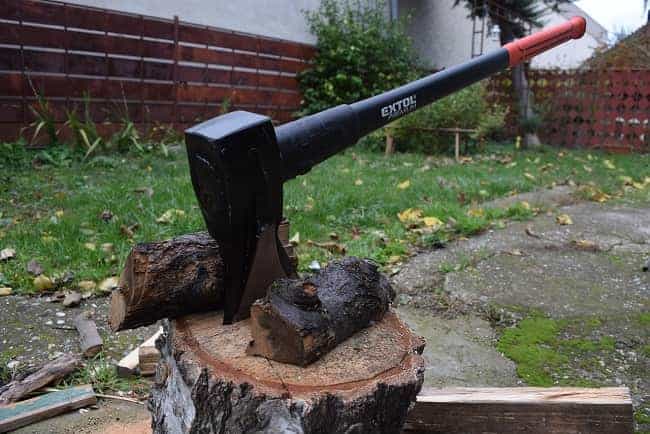
The splitting maul is a powerhouse — a tool built specifically for driving downward force into logs so they crack apart along the grain. Its wedge-shaped head, usually weighing somewhere around eight pounds, gives it momentum that doesn’t rely on razor sharpness. One end holds the tough, slightly sharpened blade; the other end resembles a sledgehammer face. This blunt secondary edge allows you to strike wedges or deal with logs in ways lighter axes cannot.
Because of its weight and shape, the maul is designed solely for vertical swings. Try moving it sideways and you’ll feel immediately that it wasn’t made for that motion. But when you need to split seasoned firewood and want each piece to fall apart with authority, nothing performs better.
Hatchet
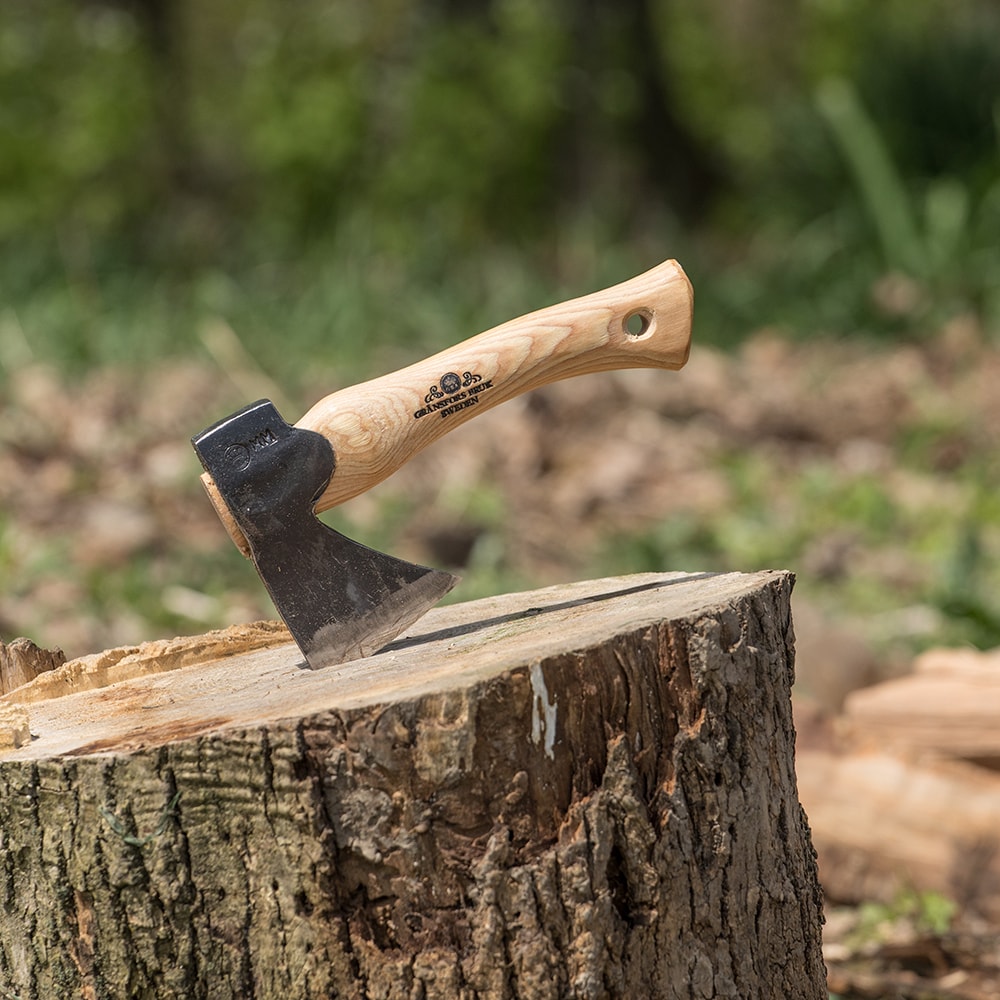
A hatchet is the kind of tool you end up taking everywhere almost without meaning to. Compact, easy to carry, and surprisingly capable, it works well for everyday outdoor tasks — gathering kindling, making small cuts, processing medium-sized branches, and splitting modest pieces of wood. Many bushcrafters treat a hatchet as part of their basic kit because it gives them cutting power without adding much weight to their pack.
It’s also one of the easiest axes to control. Whether you’re carving, notching, or clearing campfire wood, the one-handed grip allows for precise movements that larger axes simply can’t match.
Broad Axe
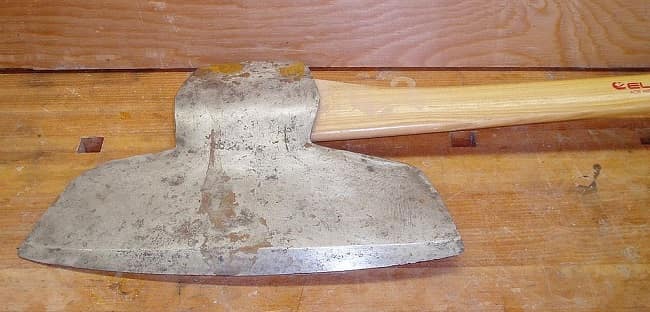
The broad axe has one job it excels at beyond all others: shaping and smoothing logs or beams through a process called hewing. The head is noticeably wide, giving you a broad cutting surface that bites deep and flattens wood effectively. There are two main styles — single-bevel and double-bevel.
The single-bevel broad axe is designed specifically for flattening one face of a log. Traditional builders use it to square off timber for cabins and handcrafted beams. The double-bevel version is more versatile and can handle both hewing and general chopping or notching. Either way, using a broad axe feels different from typical chopping — it’s more controlled, more deliberate, almost like sculpting wood rather than simply cutting it.
Felling Axe
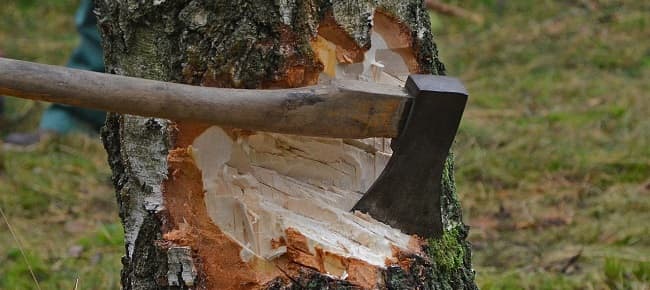
When most people picture an axe, this is the one that comes to mind. A traditional felling axe sports a relatively thin, razor-sharp blade and a head shape designed to bite sideways into the trunk of a tree. Its moderate weight — often around four pounds — lets you swing repeatedly and accurately without exhausting yourself too quickly. This accuracy matters when you’re directing the fall of a tree or removing limbs with precision.
While excellent for cutting across the grain, felling axes aren’t great for splitting wood. Their narrow blades tend to get stuck inside logs rather than forcing them apart. For that reason, many people pair a felling axe with a maul, using each for the task it was built to do.
Carpenter’s Axe
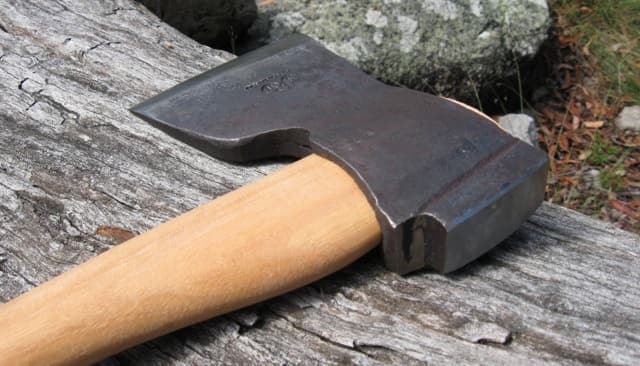
Some axes are built for brute force, but the carpenter’s axe leans toward precision. Medium in size, with a handle short enough for close control, it’s made for fine woodworking — carving joint notches, shaping beams, trimming rough surfaces, and performing detail work where a full-sized axe would feel clumsy.
Anyone building a cabin, workshop, or hand-crafted structure from raw logs quickly learns how essential this tool becomes. It bridges the gap between a hatchet and a felling axe, providing both leverage and accuracy for shaping pieces that need to fit together neatly.
Double Bit Axe
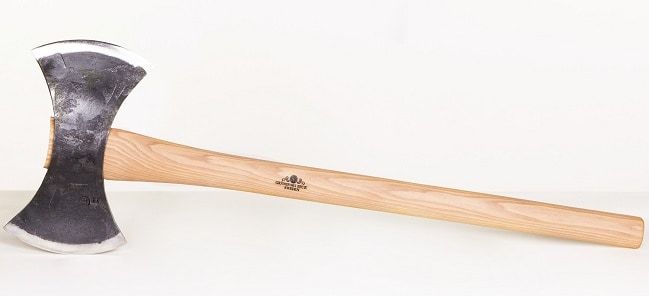
The double-bit axe carries two cutting edges on opposite sides of the head. Traditionally, one edge stays honed for sharp, clean felling cuts, while the other remains slightly duller and more durable for limbing or rougher tasks. This design lets a single tool perform two different roles by simply rotating the handle.
Although a standard felling axe might outperform either edge in its specialized task, the double bit becomes invaluable when you can only pack one tool and need versatility without compromise.
Miner’s Axe
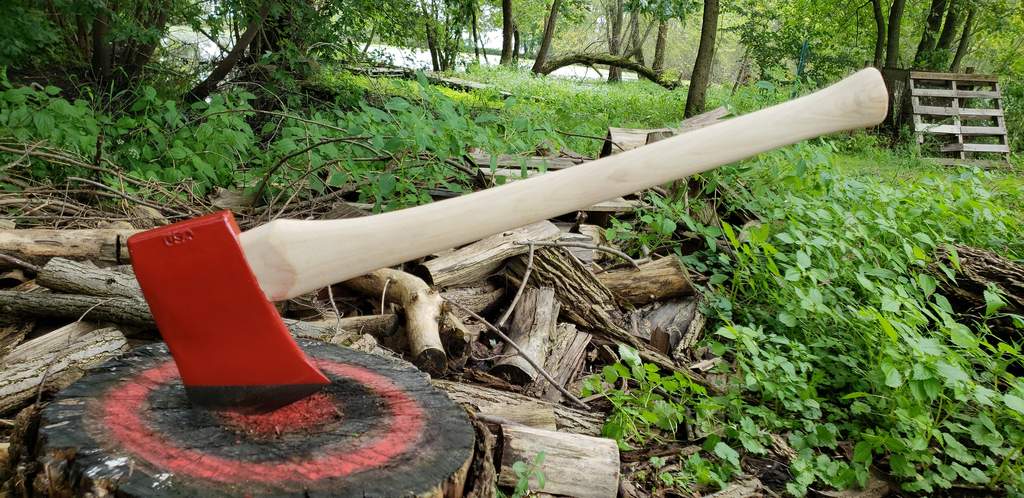
Tight underground passages call for short-handled tools, and the miner’s axe developed specifically for that environment. Compact, heavy enough to strike with authority, and shaped to maneuver in cramped spaces, it allowed workers to chip, chop, and break through material where larger axes would have been impossible to use.
Outside of mining, its uses are limited but still relevant for situations involving restricted room — such as demolition in tight corners or clearing material in confined outdoor spots.
Dayton Axe
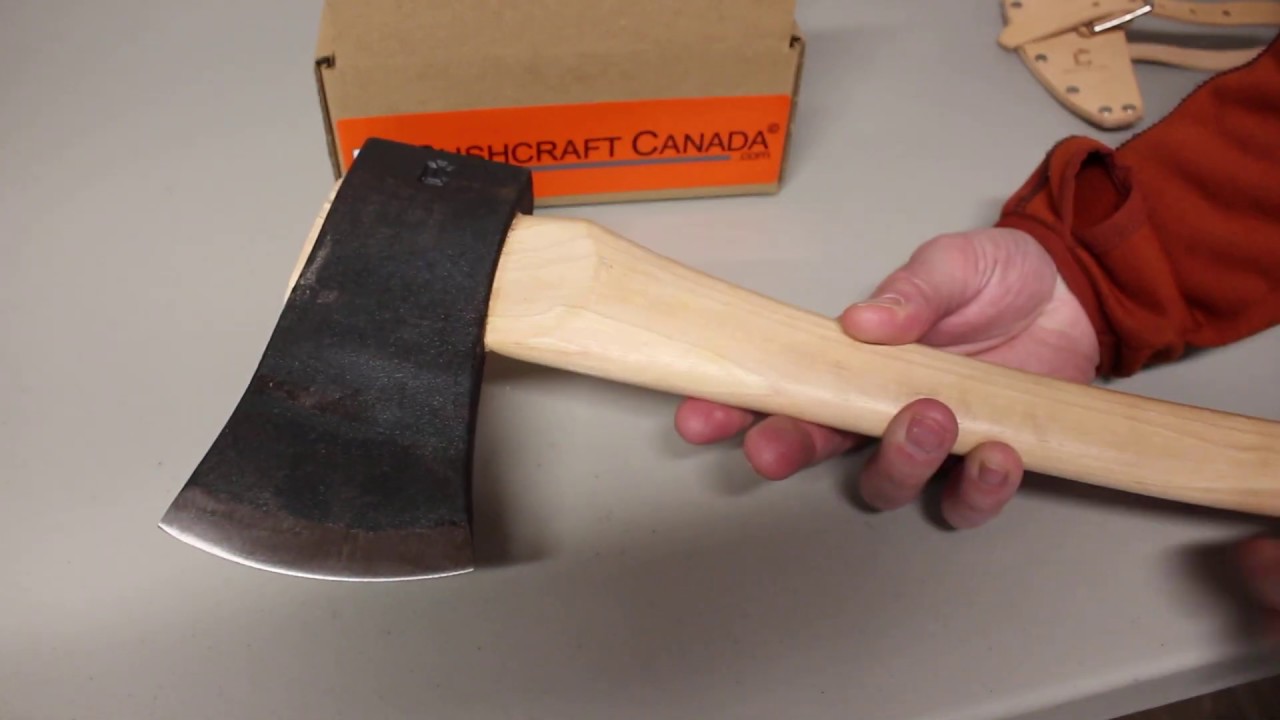
The Dayton axe is essentially a beefed-up version of the standard felling axe. Its head is broader and heavier, giving each swing more impact when cutting through large, stubborn trees. Designed for serious forestry work, it rewards strong technique and stamina with incredibly effective cutting power. When you’re dealing with hardwoods or oversized trunks, this heavier style can make a noticeable difference in how quickly you get the job done.
Axes for War and Combat
Viking / Danish Axe
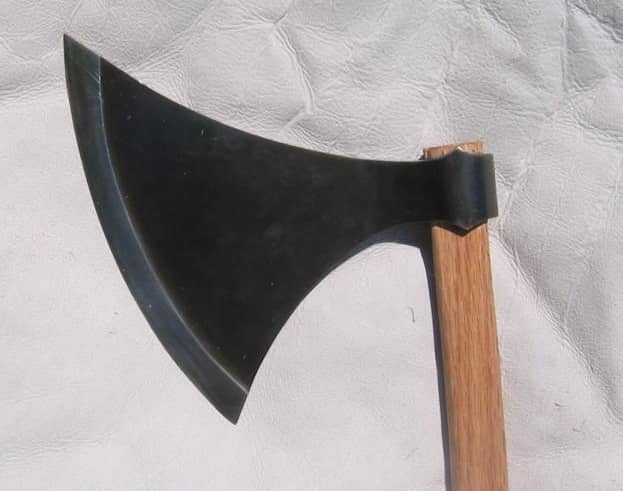
The Viking or Danish axe is one of those tools that instantly conjures images of longships, shield walls, and warriors charging across windswept fields. Historically, it was a battlefield weapon but served plenty of everyday tasks at home as well. What makes it stand out is its long handle — sometimes nearly the height of a person — paired with a wide, incredibly sharp blade capable of delivering devastating blows.
While you won't find many originals outside museums and reenactments, its design still fascinates modern craftsmen and history lovers. It remains a symbol of raw, old-world power, and when you see someone practicing with a replica, the momentum and reach become immediately obvious.
Battle Axe
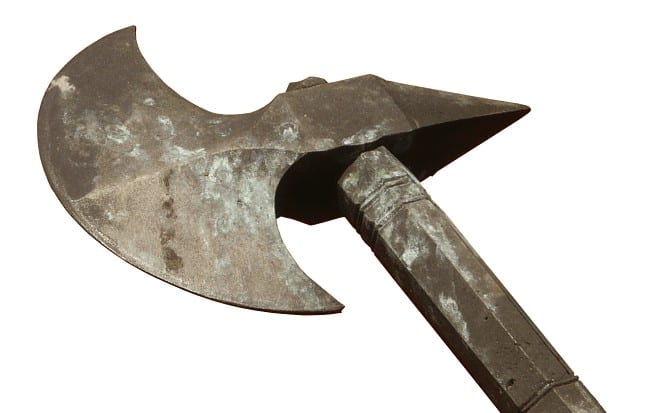
The battle axe existed in so many shapes and sizes that calling it a single “type” almost feels too simple. Soldiers and warriors across continents adapted the idea to their own fighting styles. Some were compact one-handers used with shields; others stretched up to five feet long and weighed several pounds, designed for cleaving through armor or knocking opponents off balance.
These axes weren’t made for chopping wood, even if someone in a pinch could have tried. They were tuned for combat — curved blades, reinforced heads, long handles for leverage, and in many cases specific angles intended to break through shields. Step into any large military museum and you’ll find dozens of variations, each reflecting the battlefield tactics of its era.
Tomahawk
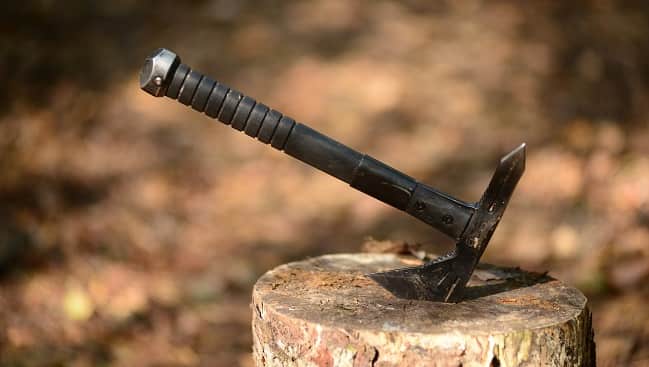
The tomahawk is a uniquely North American creation, originally crafted by Indigenous tribes who shaped stone heads onto wooden handles. Later, as iron and steel became common through trade, the design evolved into the lightweight, remarkably balanced version we recognize today.
Many tomahawks were designed with throwing in mind — a skill that served both practical and combat purposes. Modern versions often resemble tactical axes, though tomahawks typically prioritize speed and balance over extra tool functions. Their simplicity is part of the appeal: a compact weapon that can also chop, carve, or cut in day-to-day use.
Bardiche
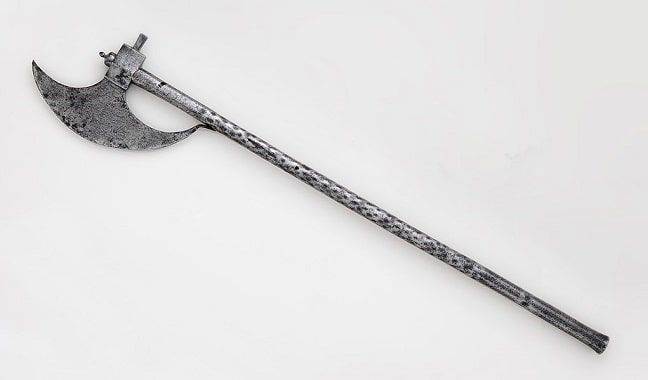
Few weapons look as shockingly oversized as the bardiche. The enormous, crescent-shaped blade mounted onto a long pole was developed to counter cavalry — the elite units of medieval warfare. Soldiers wielding bardiches could reach up, hook or strike mounted enemies, and even use the long edge to push riders off their balance.
The sheer visual impact of the weapon makes it memorable. It’s less of an all-purpose tool and more of a battlefield statement: massive reach, serious weight, and a blade designed for destructive force rather than finesse.
Axe-Pistol
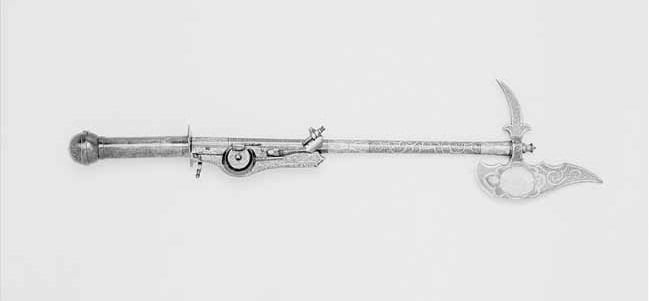
The axe-pistol is one of those historical inventions that feels almost unbelievable until you actually see one. Developed in parts of Europe, especially Germany, this hybrid combined a flintlock pistol with a compact axe head. In tight quarters — such as ship decks, fortified hallways, or ambush situations — it gave fighters two forms of attack in one hand.
Its biggest weakness was also its novelty: a firearm attached to a striking tool meant extra risk. You can imagine the anxiety of swinging an axe and hoping the mechanism didn’t discharge unintentionally. Still, it demonstrates how creatively people tried to maximize their odds in close combat.
Dagger Axe
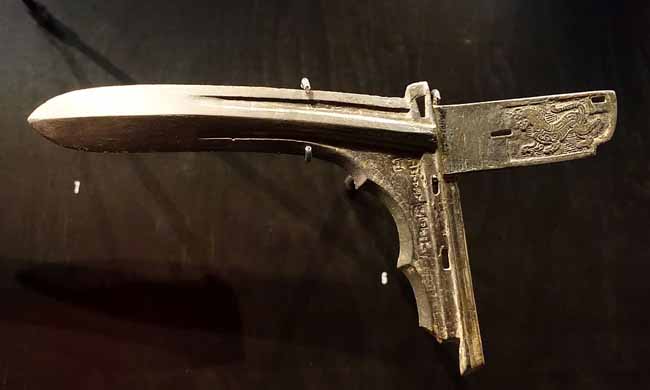
Used in ancient China, the dagger axe was exactly what the name suggests: a dagger-like blade mounted horizontally or slightly angled on a long shaft. Unlike chopping axes, its purpose was primarily thrusting, hooking, and puncturing — techniques that worked well in the disciplined formations of early Chinese warfare.
It’s an early example of specialized weapon design, created not for chopping wood or daily tasks, but strictly for fighting. Archaeologists often uncover beautifully crafted versions that reveal how important the weapon once was across several dynasties.
Halberd
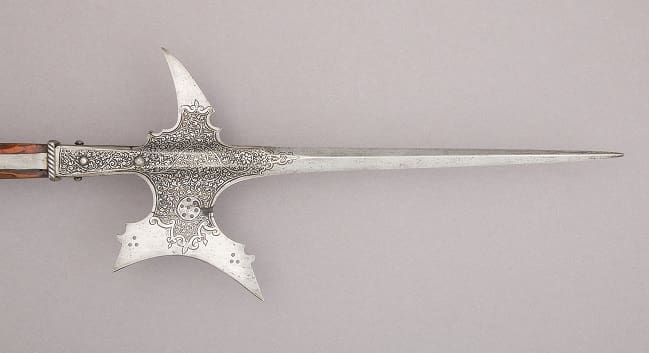
The halberd is one of the most iconic polearm weapons in history. Imagine a spear, an axe, and a hook merged into a single, intimidating tool. The long reach allowed soldiers to control distance, the axe blade delivered lethal chopping force, and the pointed tip could pierce armor or hold opponents at bay.
Its lasting symbolic presence is still visible today — the Swiss Guard carries halberds as part of their traditional uniform. Even though firearms replaced polearms long ago, the design’s elegant mix of reach and versatility keeps the halberd admired by collectors and military historians alike.
Axes for… Other Stuff
Pickhead Axe
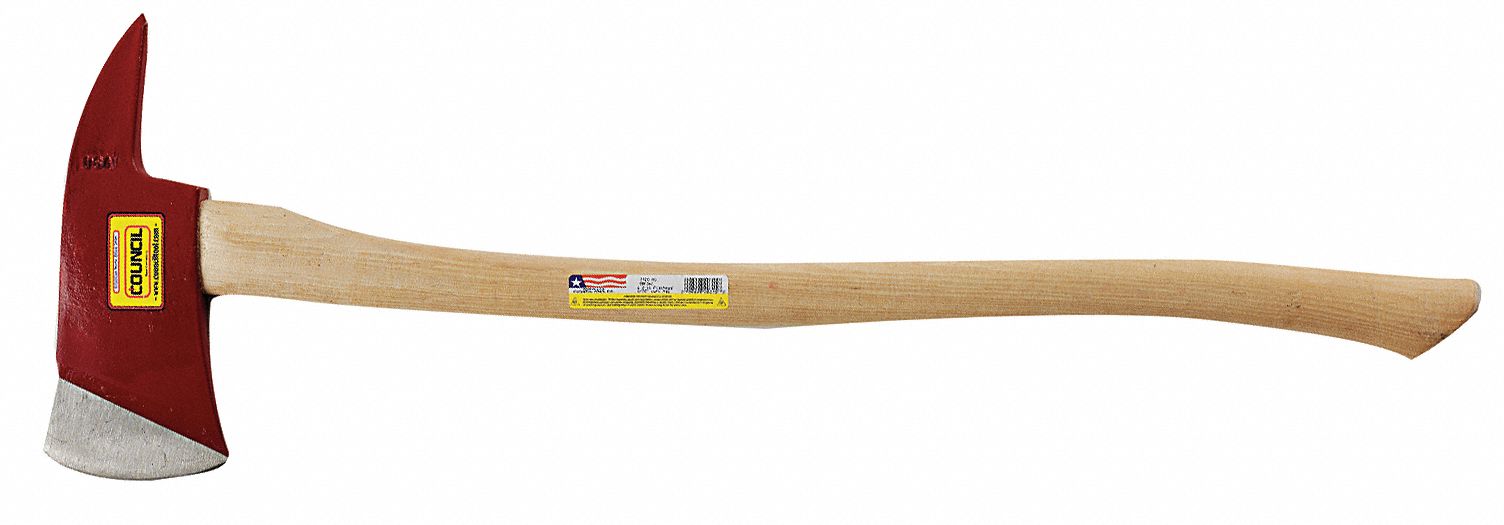
The pickhead axe excels at breaking through stubborn surfaces — stone, packed earth, debris, or barriers that resist normal chopping. One end functions like a standard axe blade for regular cutting tasks, while the pointed pick on the opposite side allows for digging or puncturing through tougher material.
Because of its dual purpose, firefighters, rescue workers, and demolition crews often use this kind of tool. It serves as both a cutter and a breaker, making it valuable in unpredictable situations.
Executioner’s Axe

The executioner’s axe carries a dark yet significant place in history. This large, heavy-bladed weapon existed for one grim purpose: beheading condemned individuals. Its oversized head was meant to deliver a clean, decisive strike, a task that required both strength and unsettling precision.
Executioners often became reluctant public figures, performing a role no one envied. The surviving axes are surprisingly ornate, some decorated with engravings or symbolic markings. They remind us how intertwined justice, ritual, and fear once were in earlier societies.
Shepherd’s Axe
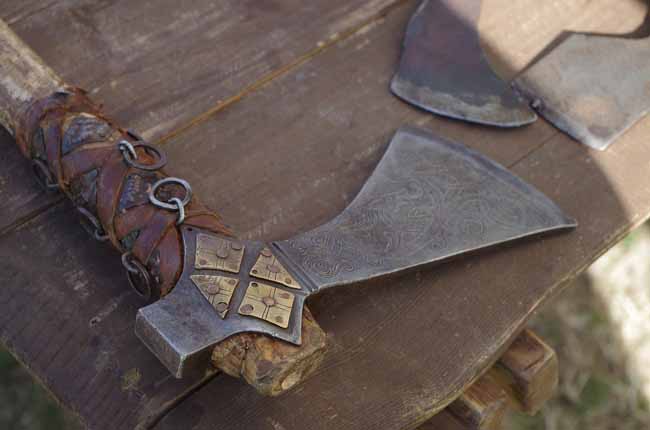
Originating from Eastern Europe, the shepherd’s axe is an elegant blend of walking stick and light-duty tool. The long handle makes it easy to use as support during long treks across hills and meadows, while the small axe head can trim branches, shape wood, or manage simple cutting tasks.
Many historical examples feature beautifully carved handles, turning the tool into a work of folk art. Shepherds relied on them daily — both for utility and for protection from predators — making them one of the more cultural and personal axe designs on this list.
Ice Axe

The ice axe is a hyper-specialized tool used by climbers and mountaineers. One end acts like an axe for chopping footholds or testing the stability of icy surfaces, while the pick serves as an anchor point during climbs. In life-threatening conditions, an ice axe can even serve as a brake when sliding — a technique climbers practice to prevent uncontrolled falls.
Its design prioritizes grip, durability, and balance. Anyone who has climbed frozen terrain knows that a reliable ice axe isn’t just an accessory — it’s a lifeline.





